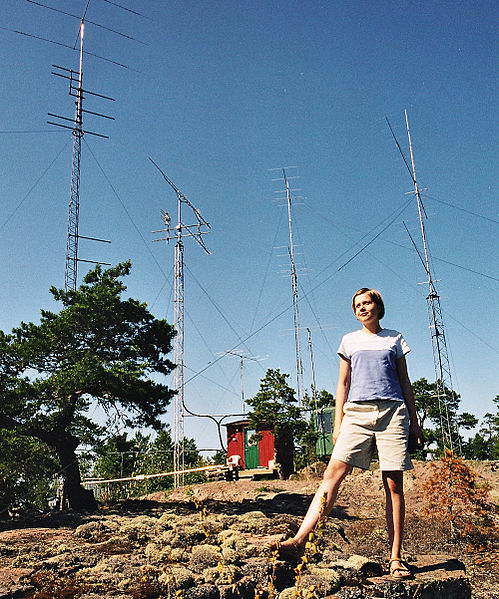In amateur radio, QRP operation refers to transmitting at reduced power while attempting to maximize one's effective range. QRP operation is a specialized pursuit within the hobby that was first popularized in the early 1920s. QRP operators limit their transmitted RF output power to 5 W or less regardless of mode.
Example of transceiver optimized for QRP CW operation: Elecraft K2
Amateur radio, also known as ham radio, is the use of the radio frequency spectrum for purposes of non-commercial exchange of messages, wireless experimentation, self-training, private recreation, radiosport, contesting, and emergency communications. The term "amateur" is used to specify "a duly authorized person interested in radioelectric practice with a purely personal aim and without pecuniary interest"; and to differentiate it from commercial broadcasting, public safety, or professional two-way radio services.
An example of an amateur radio station with four transceivers, amplifiers, and a computer for logging and for digital modes. On the wall are examples of various amateur radio awards, certificates, and reception report cards (QSL cards) from foreign amateur stations.
Polish amateur radio station SP1QE, featuring 1930s vacuum tube transmitter and receiver.
An amateur radio station in Wales. Multiple transceivers are employed for different bands and modes. Computers are used for control, data modes, SDR, RTTY and logging.
A young Polish woman with radio antennas in Åland





